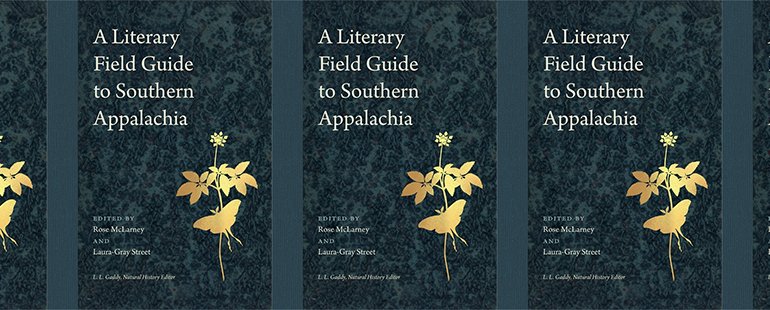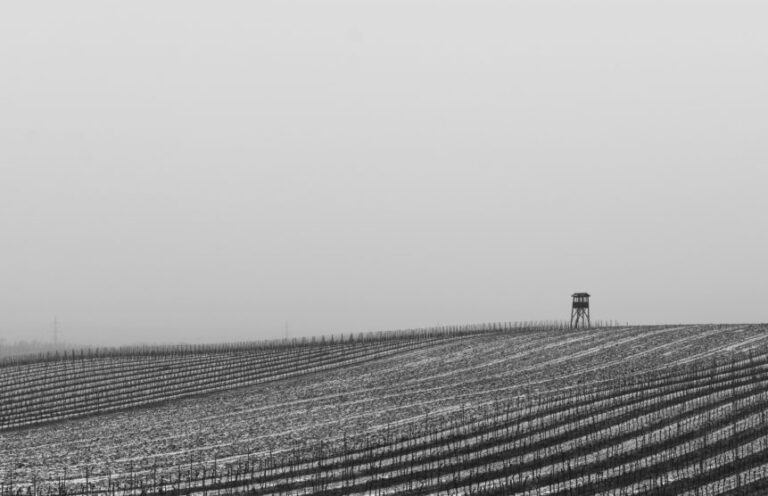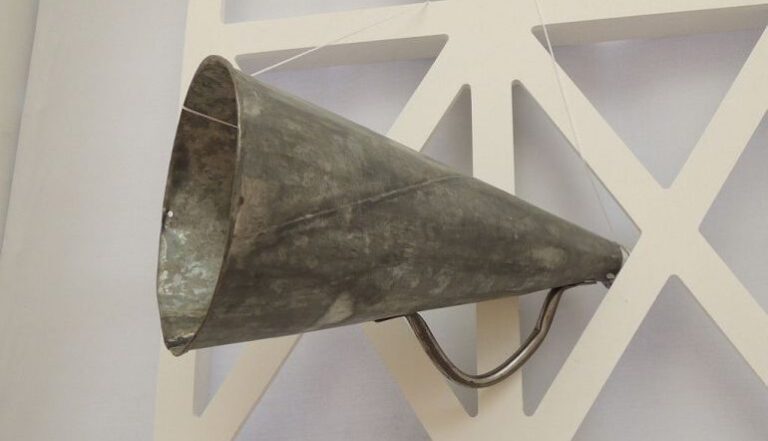Reading A Literary Field Guide to Southern Appalachia

I did not know before encountering the opening fact, tucked into this field-guide styled anthology’s dedication, that the eastern cougar, “puma, mountain lion, wildcat, catamount, painter, mountain screamer, in all its many names,” had been declared extinct in 2018 from the southeastern mountain range where I am also from. This caught a latch in my throat, lighter to such knowledge’s touch than I’d expected, and I found myself weeping, in a weird flush of witnessing one’s own earnest feeling, a grief of intimate knowledge, vast distances, and unknowable actions converging into this notation of final disappearance. I knew this animal alternately by each of those listed names, which, when used, connoted degrees of acquaintance, imminence, or ambient fear, its fact of being-near but elusive tinged with myth, like a threatening minor god. I loved to think it was out there. This is going to be my experience of reading this book, I realized: reading myself into its range of scenes, images, and odes to particular species, reading around others’ memories in poems I might not recognize for myself. Perhaps that’s an unfair indulgence, in one way, as nothing is more shared, more collectively experienced, than the natural world. But I was fairly sure that this anthology would be less an ecopoetic, posthuman, or otherwise fancy epistemological maneuver geared to reorient our seat of perception to be among, rather than of, our ecological surround than it would be a kind of genre-experiment for the Anthropocene in reconfigured local color. The term is used mostly by literary specialists, perhaps a touch recondite, and by folklorists—it is also used less warmly for writers and storytellers whose work roundly resists, intentionally or not, public interest beyond their nearby community. But this, coincidentally, is where a lot of historical knowledge lives, unobserved, in a textual field.
Though A Literary Field Guide to Southern Appalachia, edited by poets Rose McClarney and Laura-Gray Street and naturalist L.L. Gaddy, is grounded in the familiar pattern of the genre—description intended to aid a human in finding a specimen, and an image to provide enough of a likeness for confirmation in a quick one-two beat of page turns—you can’t quite use this book for that purpose. That’s one part of its charm. Its images favor the hand and mind that made them, rather than technical likenesses. In the poems, positioned as experiential extensions of the brief introductions provided by Gaddy throughout, points of view tend to offer either more fact or descriptive language; a kind of ekphrasis of “still lives,” if you will, takes place. Sometimes the trees or mammals serve as mnemonics, a way to move back into memory. Once, the subject eludes the speaker: in Justin Gardiner’s account, “On the Way to Three Forks Pool,” he writes, “This isn’t about a finding.” The entry, Carolina Gorge Moss, is “found in fewer than ten localities” in North and South Carolina, Georgia, and Tennessee, and is “so rare that there are no previously extant photographic images or scientific drawings of the species.” Knowledge of it comes secondhand, by mouthfuls of language. Gardiner’s poem essays the going, not the pinning down.
The species depicted in this anthology mostly live in the dense epicenter of state lines connecting Georgia, South Carolina, North Carolina, and Tennessee, which also are the vectors of my own life in the region. Gaddy’s introductions, written with Pliny the Elder’s sense for anecdote and detail, mark the readerly space not with inflections of apocalypse anxiety, but with contextual supplement, of local knowledge you’d spend a lifetime seeking even if you lived there. The anthology’s method quietly shows us, across its meditations from sixty poets, what it means, as in Frederick Buell’s famous phrase, to be “dwelling in crisis.” A fair few of the poems make mention of species’s dwindling numbers, with straightforward sadness and a witness poem’s outrage; other poets approach the matter through indirection, whose absence of surprise reveals instead a worn-in consideration and formally inventive response to this knowledge, such as with poems by Anna Lena Phillips Bell, Melissa Range, Landon Godfrey, L. Lamar Wilson, Lisa Lewis, and Heidi Lynn Staples. I was most drawn to the poems that weren’t apostrophizing their subject or listing its qualities. That seemed to me to have the inverse effect of wanting to center the bird’s or plant’s life with syntax’s attention, unless a larger conceit or argument was being assembled. But I wonder if, beyond my preferences as a poet and even my politics, that had to do with a larger feeling, a hidden cinder: that I have wanted to be among these life forms, or to be in these places where I hadn’t, except for summers in my early twenties, lately very much been. I wondered if the anthology would remind me that I come from there at all. It gave me that feeling.
I don’t read much nature writing, but I do work on the ecopoetics of the U.S. South, which is another way of looking at systems in place. My scholarly interests yoke in the complicated realm of southern literary studies, which is something of a ghost ship, and the unlikely cross-section of contemporary poetry. But the poets are out there, as this anthology proves. Even still, given the subject matter, it is both difficult to say something new, or to convince anyone that there is something new to say regarding it. Amidst all this, too, something else is afoot, as Tressie McMillan Cottom identifies. The region and its cultural productions are changing, precisely because of people like me, who have lived afield from it and are for different reasons moving back. And, I’d add, who never really left even while they lived in other places.
The closest call I’ve so far had with returning was through a relationship, in which the proposed endpoint of seven tumultuous, distanced years was for me, in a few words, to come home. We’d met in Western North Carolina when we were teenagers. But the first words he spoke, when I called to tell him I’d been accepted to graduate school for poetry, were—that’s two more years away from me. Over and over, the offer he posed was both an entry to his life, and the place he’d never leave. We spent our time outdoors mostly driving, circling familiar passes, ascending horsepin turns and flooring valley stretches between cities. “These mountains will always be your home,” he once wrote on the back of a photograph he gave me, though we haven’t spoken for what has become many years. He meant himself, of course, as that place, not the ochre sunset pictured. The other life I could have had makes cherishing those mountains both fact and fiction.
Whether or not I would be the intended audience for this anthology is worth noting, for the same reason that every writer I know who’s lived in the area wants to write about it, and when living elsewhere, remains alert in a low-key search for its high-vibrating frequency. It’s a curious habit of southern writing (rural writing, too): to figure oneself as apart, the single source, the last surviving speaker, reporting while the world disintegrates. Such a perceptive position is perennially tempting—it is all of traditional Anglophone lyric poetry since Wordsworth’s Prelude. Meanwhile, there have been so many of us—poets and writers from the U.S. South—who write like we are the only one watching, from within a distinctive, molten collapse, from within a societal failure whose scale extends into the immense human losses of the past and to the economic shifts of thinking responsible for planetary environmental destruction. The very magnitude of all that, coupled with the other speeds of contemporary living’s catastrophes, perhaps motivates the comparatively small, determined need to use one’s physical voice to talk, or tell, about it all. That phenomenon interests me most for what it reveals about how we experience living it.
In her own contribution, McClarney charts the kind of inquiry that, before it shifts into praise, signals to me that lyric-narrative poetry is absorbing the possibilities that ecopoetics offers, nudging nature poetry beyond the ode and human-centered experience. In “Fringe and Flourish,” her entry on the fat pocketbook mussel, so much of what’s typically cordoned off, whether by aesthetic affiliations or scholarly evaluations both, is written into closer contact. The fat pocketbook mussel is itself, but it is also a figure for figuring, an original cipher. That gesture of simultaneously reaching inward to expand outward, and outward to tunnel inward, advances a way of gently thinking both with the animal as well as about writing itself. “Figurative language was the first language,” McLarney asserts, confirming Margaret Ronda’s categorical observation for her study Remainders: American Poetry at Nature’s End, that such poems of what she terms The Great Acceleration of the latter twentieth century “invest figures of apostrophe and prosopopoeia with new proportions in relation to the accelerating of habitats and biodiversity loss.” McLarney’s ecological imaginary, even while narrating and skirting anthropomorphization—“But the mussel unfurls her fingers. / She widens her eyes”—emphasizes that lyricized emotion and memory alongside ecopoetic impulse can, and already do, productively co-exist. These are metaphors interchanging what is real and what is imagined. It is how a human approach to the natural world works, in this particular literary context.
As McClarney and Street write in their introduction, “As editors (and poets and humans), we know our perceptions, our categories, and sometimes our choices are imperfect. We hear the truth in Gyorgi Voros’s ‘Single-Sorus Spleenworth (Asplenium monanthes),’ scoffing that words such as ‘rare, endangered, prized’ that people apply don’t matter to plants. At the same time, a poet’s choice of words can make all the difference for a human reader.” I also write from within this confluence of concerns, a narrow path. Recently, I’ve come to stay in northwest Georgia for part of the winter, in retreat from the deep cold of Colorado. I thought I would be writing this essay from there, but instead I am here, wrapped in a kind of wordless familiarization that can only be worked through by being out there, in the woods, which is what I’ve wanted. In the most readerly sense, I’ve brought this anthology with me.
This piece was originally published on December 22, 2020.


